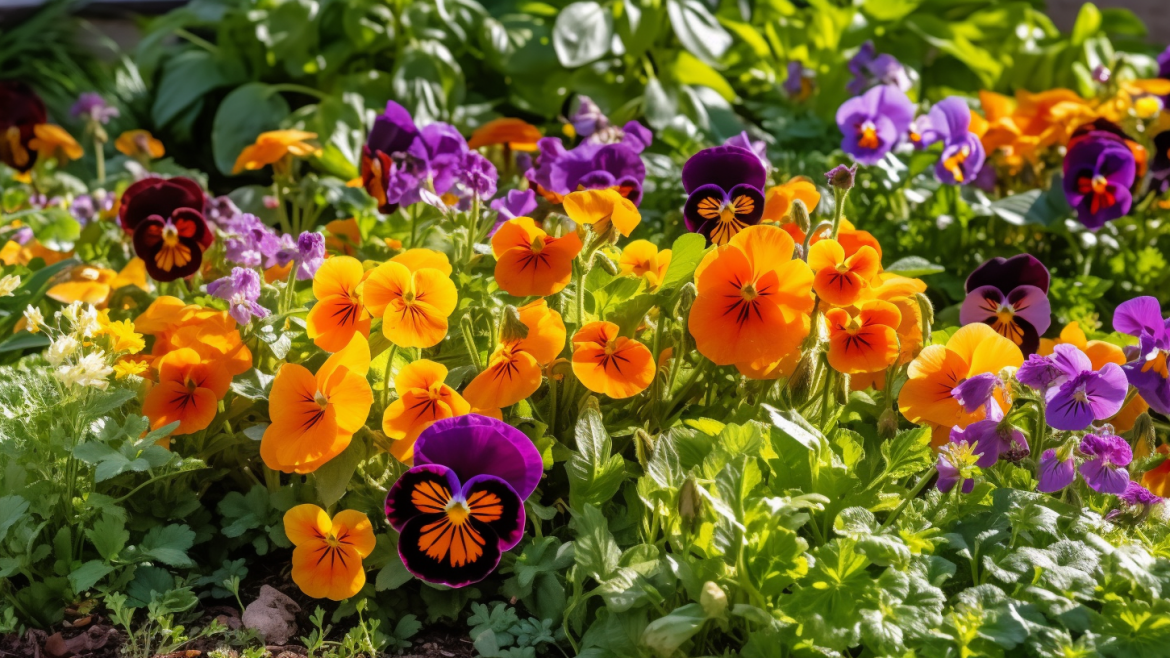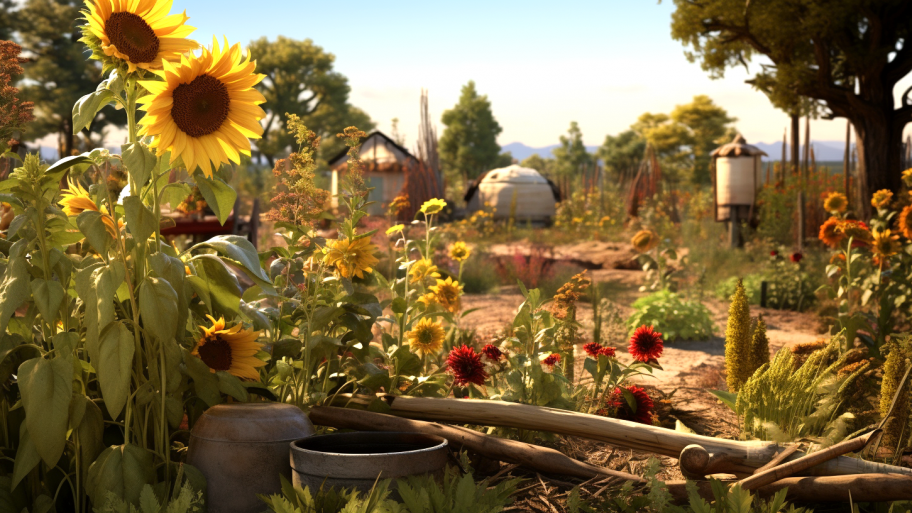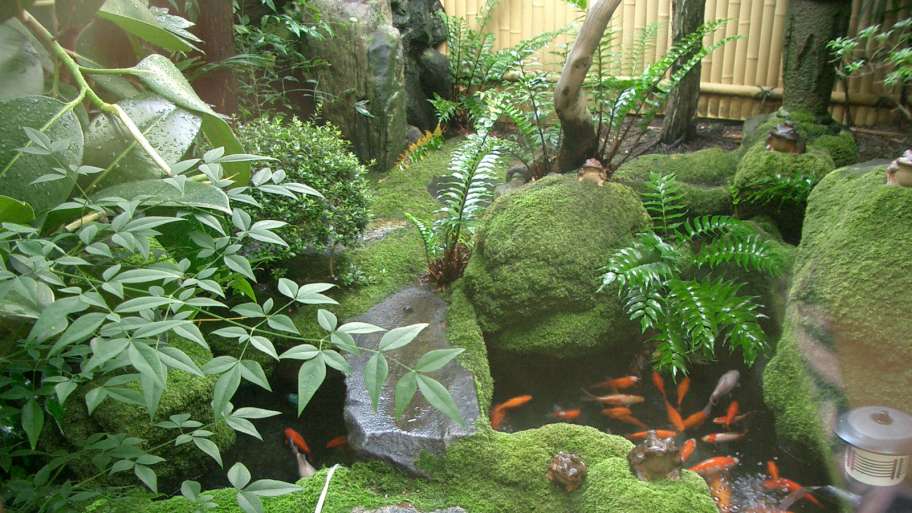Planting an edible flower garden is like embarking on a grand botanical adventure. You have the power to create a vibrant, living palette of taste, texture, and color. But where should you begin?
Imagine stepping out into your garden on a sunny morning, where bright marigolds wink at you with their sunny dispositions. The peppery taste of their petals add a zing to your salads. Then, you stroll over to the violets, their mild, sweet flavor a perfect companion for a refreshing summer beverage. The elegant nasturtiums, with their bold, peppery taste and radiant colors, are begging to be pickled, while the charming pansies, with their mild minty flavor, can’t wait to adorn your cakes and pastries.
The choice of flowers to grow is vast, and each one brings its unique color, flavor, and charm to your garden and kitchen. Take the time to research and understand the needs and characteristics of each flower. Consider factors like climate, soil type, sunlight requirements, and growing season while making your selection.
From Seed to Bloom: Cultivating Edible Flowers
Creating an edible flower garden is a journey of growth, both for your plants and you as a gardener. Each flower has its unique needs, just like we do. Some prefer basking in the sunlight, while others thrive in the shade. Some like their feet kept moist, while others prefer drier soils. Understanding these individual needs is key to a flourishing garden.
For example, nasturtiums, with their lily-pad leaves and bright, showy flowers, are quite the sun-worshipers and like well-drained soil. The elegant calendula, on the other hand, is a bit more flexible and can handle a range of sunlight and soil conditions.1
Once you’ve planted your edible flower garden, the adventure continues. There are pests to watch out for, weather conditions to adapt to, and the timely harvest of your beautiful, tasty blooms. It’s a dance with nature, and every step brings its own rewards.
Anecdotes from the Garden: Personal Experiences in Edible Flower Gardening
One of the most magical aspects of edible flower gardening is the personal connection that develops between the gardener and the garden. Each plant, each bloom, tells a story.
Take my own experience, for instance. I still remember the sheer joy of tasting my first homegrown pansy. The mild, minty flavor was a delightful surprise. That single moment sparked a culinary adventure that continues to this day. My kitchen hasn’t been the same since!
Or consider the tale of Alice, a friend and fellow gardener, who found an unexpected favorite in borage. The delicate, cucumber-like flavor of these star-shaped blue flowers turned her summer lemonade into a gourmet experience. Her lemonade stand was the talk of the neighborhood that summer!
Overcoming Green Thumb Challenges: Dealing with Pests and Other Problems
Like any gardening endeavor, growing edible flowers isn’t always a bed of roses. There are challenges to face, from pesky pests to diseases and unpredictable weather.
For instance, slugs have a notorious love for marigolds. One day, your marigolds may be standing tall and proud, and the next, they might be a feast for these slimy critters. A solution? Planting some rosemary or sage nearby can deter these pests, thanks to their strong scent.
Weather can be another fickle factor. An unexpected late frost can potentially damage your blooms. But worry not, for even these challenges can be overcome with a bit of planning and preparation. Using row covers or bringing potted plants indoors can shield your delicate blooms from the harsh frost.
Culinary Creations: From Garden to Plate
Growing edible flowers is only the first step in this delicious journey. The real magic begins when you bring these blossoms into your kitchen. From salads and desserts to beverages and garnishes, the culinary possibilities are as diverse as the flowers themselves.
Imagine the delight of seeing your children’s eyes light up when they see pansies in their fruit salad. Or the surprise of your dinner guests when they taste the peppery zing of nasturtiums in their salad. And there’s nothing quite like sipping on a chilled glass of lavender lemonade on a hot summer day, the subtle floral notes perfectly complementing the tangy citrus.
But remember, not all flowers are edible, and even those that are should be consumed in moderation. Always ensure that your flowers haven’t been treated with pesticides or other harmful chemicals.
Expert Insights: Tips from the Masters
Cultivating an edible flower garden is a learning journey, and who better to learn from than those who’ve walked this path before us?
Renowned gardener and author Rosalind Creasy, a pioneer in the field of edible landscaping, shares a key insight: “Start small, with a couple of varieties, learn their ways, and then expand your garden.” This approach allows you to understand the needs and behaviors of your plants and makes the process less overwhelming.
Another tip comes from Frances Palmer, a potter and gardener known for her exquisite dahlias. She recommends considering the overall design of your garden, even when it’s primarily for culinary use. “The aesthetics of your garden matter. It’s not just a source of ingredients; it’s a space that nourishes your soul.”
Recommended Products for Edible Flower Gardening
- “Edible Flowers: A Global History” by Mary Newman: Dive deeper into the fascinating world of edible flowers with this comprehensive book that covers everything from the history of edible flowers to their uses in various cultures.
- AeroGarden Bounty Basic Indoor Hydroponic Herb Garden: A foolproof way to start your edible flower journey. This hydroponic system lets you grow flowers indoors, regardless of the weather outside.
- Organic Edible Flower Seeds Variety Pack: This pack includes seeds for seven popular edible flowers, including calendula, borage, and nasturtium, making it a great starting point for new gardeners.
- “The Edible Flower Garden” by Rosalind Creasy: Learn from the master herself with this guide that covers everything from selecting and growing edible flowers to recipes for using them in your kitchen.
Conclusion: The Blossoming Journey Continues
An edible flower garden is more than just a source of unique, flavorful ingredients; it’s a space of beauty, a place of learning, and a sanctuary for the soul. As you nurture your garden, you’ll find it, in turn, nurtures you, bringing moments of joy, wonder, and delicious surprises.
So, are you ready to embark on this blossoming journey? Remember, every flower has a story to tell, and every garden, a flavor to share. As we move on to our next exploration – “Petal Platter: Serving Up Blooming Delicacies” – we invite you to delve deeper into the world of edible flowers, where every petal holds a promise of culinary delight.




